Approaching the finish of the repair work and having pasted over the well-prepared surfaces of the walls or ceiling with the appropriate material, all that remains is to paint the wallpaper with water-based paint, giving the interior perfection.
The overall impression of the design of the room depends on a considerable number of factors: the type of coating, the type of decor and the method of its application. In this matter, it is important not only to understand which paint is suitable for wallpaper of one kind or another, but also to understand the intricacies of application technology.
Assortment for painting
On the shelves of building materials stores there is a huge assortment of wallpapers: traditional, liquid, special non-woven for coating. It is the latter of this number that are bought most often, because they make it possible to modify the design of pasted-over canvases by means of a new coloring without carrying out global repairs.
Please note, to avoid color distortion, choose solid color rolls when painting. But it is best to give preference to white canvases.

How to choose the right one?
Painting wallpaper with water-based paint is a serious task, which should be carefully prepared for. Before starting work, it is worth determining which type of paint is suitable for the selected type of canvas. Let's take a closer look.
The use of certain materials for painting wallpaper directly affects the quality. It, in turn, determines the durability of coatings, their wear resistance and appearance.
For wallpaper painting it is recommended to use only those dyes that are produced on a water basis. Not only water-based emulsion is suitable for work, but also acrylic dispersion paint, which is environmentally friendly and suitable for processing dry residential premises with normal and slightly high humidity levels.
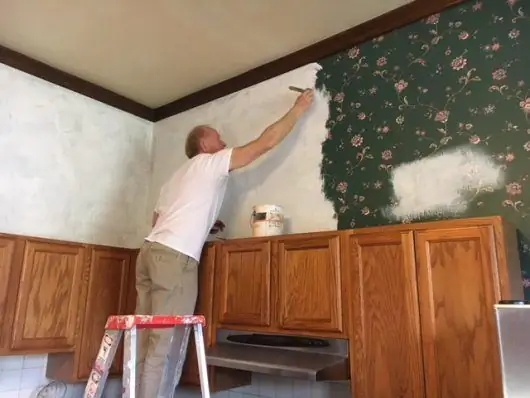
Water-based paint for wallpaper for painting can be diluted with color of any shade.
Features of latex coating
In addition to water-based or acrylic paints, many experts recommend using latex dispersion paint. It is a material characterized by safety and environmental friendliness. However, when using it, do not forget that depressurization of the package leads to very rapid drying of the contents. Therefore, it is worth painting the wallpaper immediately after printing the container. The composition is preliminarily diluted with water.
Until the wallpaper soaked with paint is completely dry, you will have to wait up to 72 hours. Consumption -one liter of diluted composition per six square meters of area.
The use of this type of paint for wall covering does not require pre-impregnation with a primer. The main thing is to clean the surface and apply it to dry wallpaper.
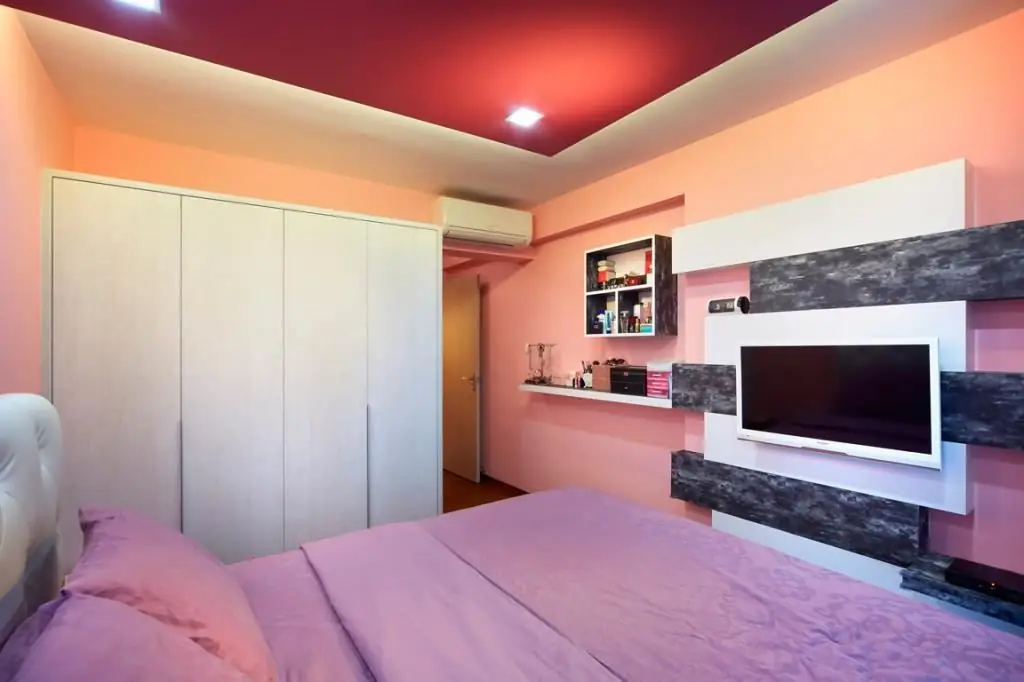
When to start painting
After pasting the surfaces (walls or ceiling), let them dry, leaving for a couple of days. Only after that proceed to painting the wallpaper with water-based paint. This is a prerequisite, otherwise the canvases may fall off.
For non-woven coatings, it is better to take a hard brush in order to achieve a better study of relief surfaces. Before starting work, experts recommend covering the floor with plastic wrap. So you avoid unnecessary work in the form of cleaning it from dried paint.
How to prepare for the upcoming renovation
Before proceeding directly to painting the wallpaper or ceiling with water-based paint, we recommend that you practice on a small area. Only after you make sure that everything works out for you (the color is solid, and the paint itself lays down evenly), get to work.

How to paint liquid wallpaper?
Masters often hear this question. It is connected with the fact that people are worried about how safe it is to paint liquid wallpaper, and whether it can be done at all. Will such actions entail irreparable consequences associated with damagecoverage? No repairman can unequivocally answer this question, and even experts doubt it.
In fact, the work associated with painting liquid wallpaper with water-based paint is not difficult. It all depends on the quality of the coating and the right choice of decorating composition.
There is no separate type of product referred to as paint for liquid wallpaper. But this does not mean that they are not subject to such coverage. Most masters consider this type of work unjustified, because liquid wallpapers are initially characterized by a beautiful structure that does not require additions or decorations. Why spoil something that was already created for decor?
Some features of liquid wallpaper as surfaces for painting
Please note that the qualities described below must be taken into account when painting wallpaper with water-based paint:
- This is a material with an interesting structure, and this fact should definitely be taken into account. If the layer is thick, the texture may hide behind it; the original colors and interspersed with sequins, silk-screen printing, which adds even more exclusivity to the structure, will no longer be visible after processing.
- Liquid wallpaper - a material that is easy to remove from the walls, simply diluted with water. And here it is worth considering how practical it will be to paint such walls or ceilings if a partial renovation of the interior is required.
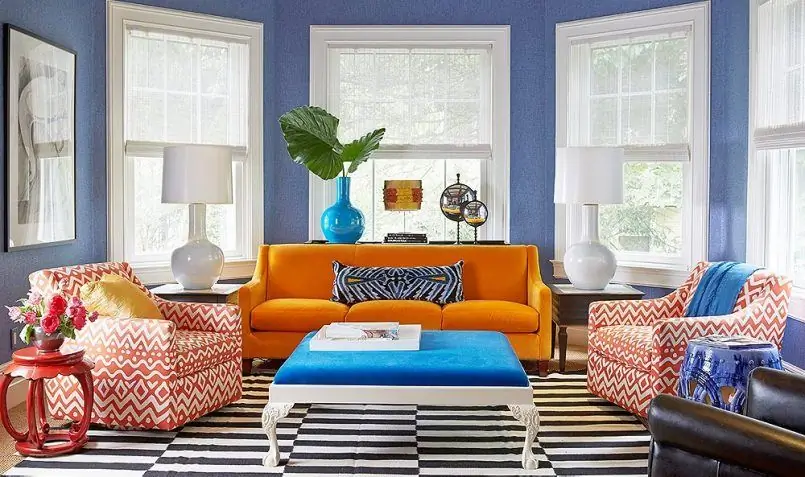
Please note that you can use a sprayer to paint ceiling wallpaper with water-based paint or liquid wallpaper on walls. This will enableupdate the interior, modify the shade of the coating and at the same time not give in to cardinal changes in the structure of the wallpaper. This process is not difficult. Cope with a similar treatment of surfaces finished with liquid wallpaper, even a person without experience in this field.
Before you decide to paint your wallpaper, weigh the pros and cons of doing so. Only then make a decision.
Pros of coloring wallpaper
Among the main positive factors, those who had to deal with such work distinguish the following:
- The ability to hide dirt and stains that have appeared on the surface of the wallpaper over many years of operation. This is the easiest and most budget option to modify the interior.
- Chance to give the finish a fresh, updated look if it has faded in sunlight.
- Multiple processing if needed.
- Painting wallpaper with water-based paint with your own hands allows you to choose any shade to create a harmonious balanced interior design to your liking.
- Operation is simple.
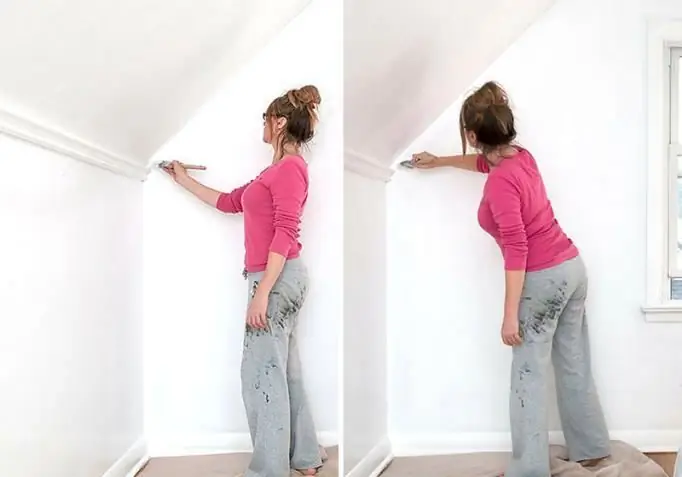
Technological features of painting modern wall and ceiling coatings
Having de alt with the intricacies of coloring liquid and non-woven wallpaper, let's move on to a description of the technology itself. This process looks like this:
- Prepare the surface first.
- Next work with the paint: add the desired shadecolor (it is recommended to take 1-2 tones darker than the wallpaper itself), stir until a uniform color and consistency. Choose water-based or acrylic paint for painting liquid or non-woven wallpaper.
- Use a roller for application, and if the work requires urgency, then you can resort to automating the process, armed with a spray gun.
- Let surface dry well.
As you can see, painting non-woven wallpaper with water-based paint, wall and ceiling surfaces finished with liquid wallpaper is not a problem. This is a very real and affordable option to decorate a room in a new way, which does not require much time, financial and labor costs.
Please note that plain non-woven wallpaper can be painted by going through a special roller that leaves prints. This option looks interesting in the interior.
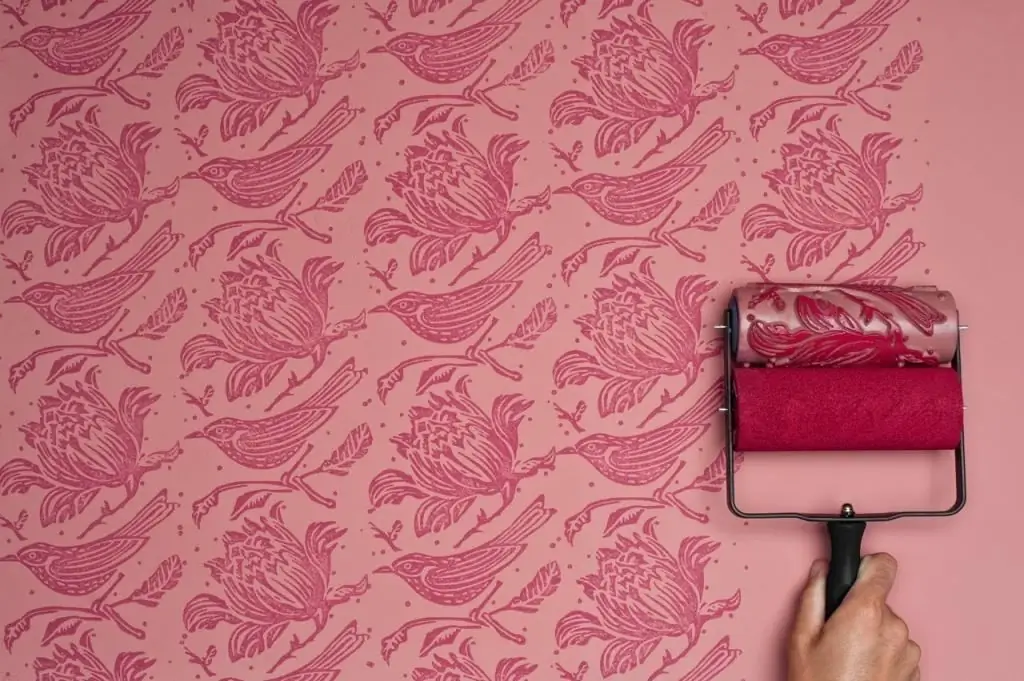
Everyone will be able to cope with such work, even if you have never encountered repair work, because you had to paint or whitewash the interior of the house at least once in your life.
Follow the following guidelines for wallpaper processing and follow the advice of experts to avoid possible difficulties during the work.






